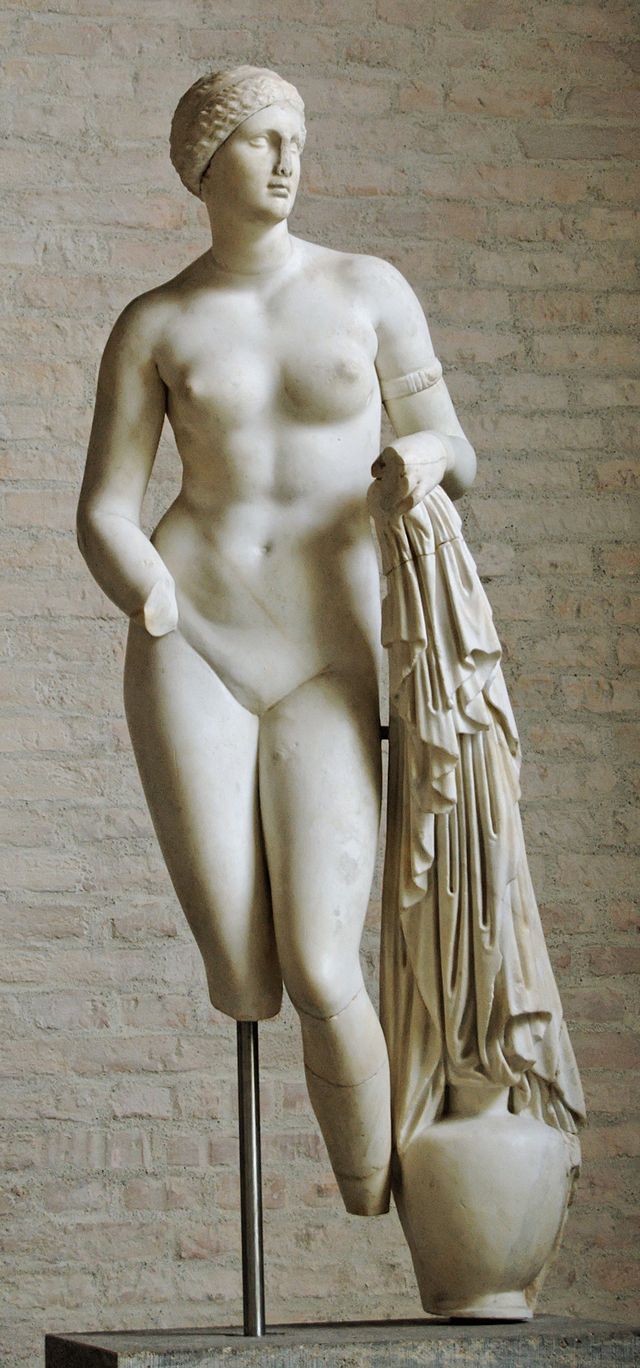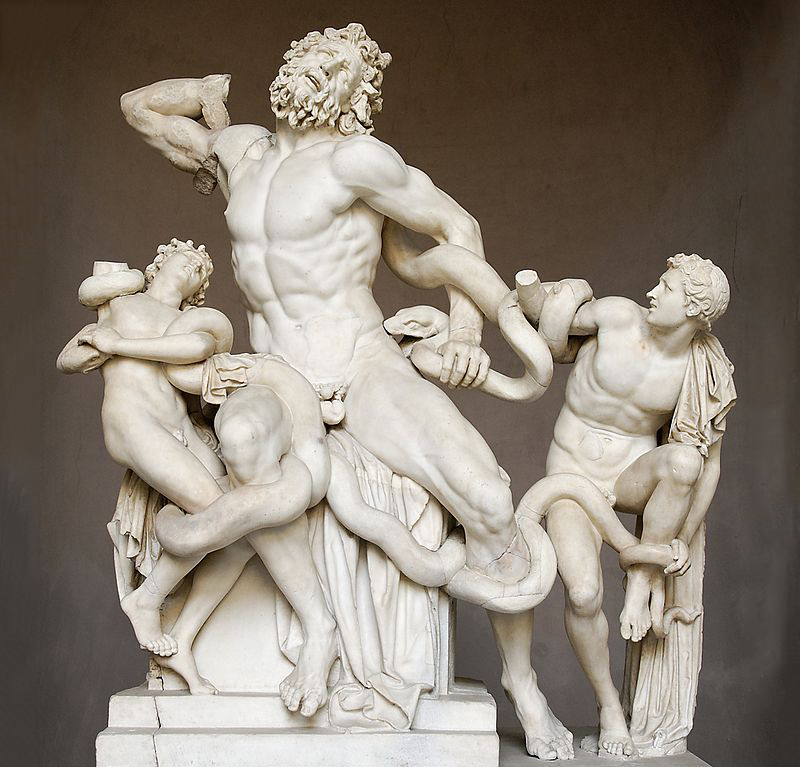 So-called Venus Braschi by Praxiteles, type of the Knidian Aphrodite, Munich Glyptothek
So-called Venus Braschi by Praxiteles, type of the Knidian Aphrodite, Munich Glyptothek
Considered to be the origins of modern civilization, the Greeks built an empire rich in culture and knowledge, as well as stunning art achievement. The arts of ancient Greece have exercised an enormous influence on the culture of many countries all over the world, particularly in the areas of sculpture and architecture. In the West, the art of the Roman Empire was largely derived from Greek models.
The art of Ancient Greece is usually divided stylistically into four periods: the Geometric, Archaic, Classical, and Hellenistic. The Geometric age is usually dated from about 1000 BC. The period of the 7th century BC witnessed the slow development of the Archaic style was exemplified by the black-figure style of vase painting. The onset of the Persian Wars (480 BC to 448 BC) is usually taken as the dividing line between the Archaic and the Classical periods, and the reign of Alexander the Great (336 BC to 323 BC) is taken as separating the Classical from the Hellenistic periods.
In reality, there was no sharp transition from one period to another. Forms of art developed at different speeds in different parts of the Greek world, and as in any age some artists worked in more innovative styles than others. Strong local traditions, conservative in character, and the requirements of local cults, enable historians to locate the origins even of displaced works of art.
The Ancient Greeks made pottery for everyday use. The history of Ancient Greek pottery is divided stylistically into five periods:
- the Protogeometric from about 1050 BC
- the Geometric from about 900 BC
- the Late Geometric or Archaic from about 750 BC
- the Black Figure from the early 7th century BC
- and the Red Figure from about 530 BC
Inspired by the monumental stone sculpture of Egypt and Mesopotamia, during the Archaic period the Greeks began again to carve in stone. Free-standing figures share the solidity and frontal stance characteristic of Eastern models, but their forms are more dynamic than those of Egyptian sculpture.
At the start of Greek art, there was very little emphasis or no emphasis on the human body although the Greeks thus decided very early on that the human form was the most important subject for artistic endeavour. In the Archaic Period the most important sculptural form was the kouros, the standing male nude. The kore, or standing clothed female figure, was also common, but since Greek society did not permit the public display of female nudity until the 4th century BC, the kore is considered to be of less importance in the development of sculpture.
After the Archaic period in Greek art, the Greeks became very interested in the human body, its expressions and emotions. With greater knowledge of the human body came vast improvement in the sculptures. They were not concerned much with the reality of the face and its expressions. As the Greeks were moving from the Archaic to the Classical (480-450 BC), they became more involved with how we really looked.
 Laocoön and His Sons (Late Hellenistic), Vatican Museum
Laocoön and His Sons (Late Hellenistic), Vatican Museum
The transition from the Classical to the Hellenistic period occurred during the 4th century BC. Many sculptures previously considered as classical masterpieces have turned out to be of the Hellenistic age. Sculptures from this period became more and more naturalistic. Common people, women, children, animals and domestic scenes became acceptable subjects for sculpture, which was commissioned by wealthy families for the adornment of their homes and gardens. Realistic portraits of men and women of all ages were produced, and sculptors no longer felt obliged to depict people as ideals of beauty or physical perfection. At the same time, the new Hellenistic cities springing up all over Egypt, Syria, and Anatolia required statues depicting the gods and heroes of Greece for their temples and public places. This made sculpture, like pottery, an industry, with the consequent standardisation and some lowering of quality. For these reasons many more Hellenistic statues have survived than is the case with the Classical period.

